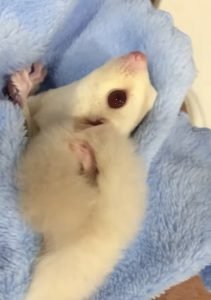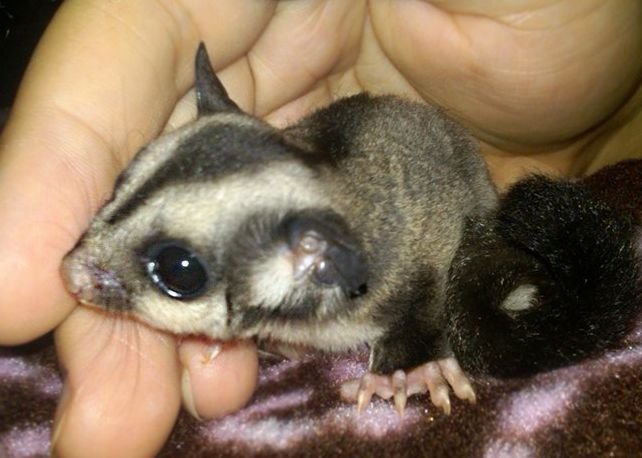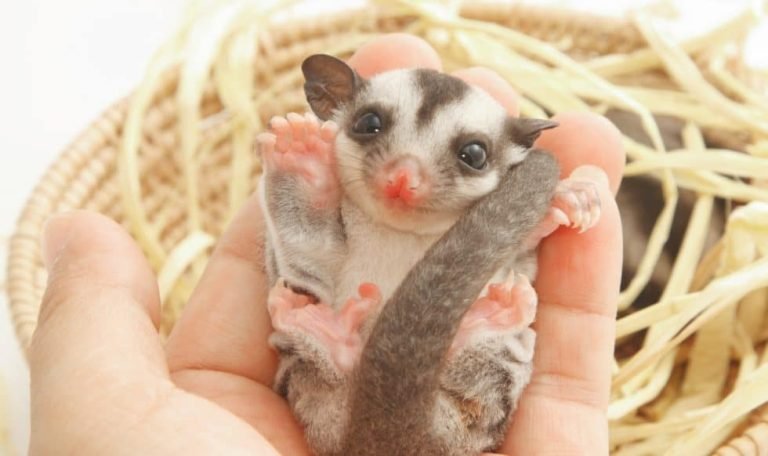How To Look After A Sugar Glider
Looking After a Sugar Glider: A Comprehensive Guide
If you’ve recently welcomed a sugar glider into your home or you’re considering getting one as a pet, it’s important to understand how to properly care for these adorable creatures. Sugar gliders are small, nocturnal marsupials that are becoming increasingly popular as pets due to their playful nature and endearing appearance. But while they may be cute, sugar gliders require specific care to ensure their health and happiness. In this guide, we will cover all the essential aspects of looking after a sugar glider, from their diet and habitat to their social needs and health considerations.
Diet and Nutrition
Proper nutrition is crucial for the well-being of your sugar glider. In the wild, these animals primarily feed on a combination of nectar, sap, gum, and insects. To replicate their natural diet, it’s important to provide a balanced and varied diet in captivity. Here are some key considerations:

The Base Diet
The base diet for a sugar glider should consist of a specially formulated pellet or mixture. Look for a pellet that is specifically designed for sugar gliders and contains all the necessary vitamins, minerals, and proteins they need. Some popular brands include Wombaroo and HPW (High Protein Wombaroo).
The Fresh Food
In addition to the base diet, sugar gliders require fresh fruits and vegetables. Some suitable options include apples, pears, grapes, carrots, and leafy greens. It’s important to introduce new foods gradually to avoid digestive upset, and always remove any uneaten fresh food after 24 hours to prevent spoilage.
The Treats
Sugar gliders also enjoy occasional treats, such as mealworms or crickets. These can be offered as a supplement to their regular diet but should be given in moderation to prevent obesity. Avoid giving sugary treats or processed foods, as these can be harmful to their health.
Housing and Habitat
Creating a suitable living environment for your sugar glider is essential for their overall well-being. Here are some key considerations when it comes to their housing:
The Cage
Choose a cage that is spacious, secure, and made of wire mesh to ensure proper ventilation. The minimum recommended size for a single sugar glider is 20″ x 20″ x 36″, but larger is always better. Opt for a cage with narrow bar spacing to prevent escape.
The Enrichment
Sugar gliders are highly active and curious animals that require mental stimulation. Provide plenty of toys, perches, ropes, and branches for them to climb on. Additionally, include a nesting box or pouch for them to sleep in during the day.
The Location
Place the cage in a quiet area away from direct sunlight, drafts, and excessive noise. Sugar gliders are nocturnal, so they need a dark and quiet environment to get proper rest during the day.
Social Needs
Sugar gliders are social animals that thrive in the company of their own kind. While they can bond with their human caretakers, it’s essential to provide them with social interaction within their own species. Here are some important considerations for their social needs:
Consider Getting a Pair
If possible, it’s recommended to get at least two sugar gliders. This way, they can provide companionship and engage in natural behaviors like grooming and playing. Ensure that the gliders you choose are compatible and introduce them gradually to avoid aggression.
Interaction and Playtime
Spend regular time interacting with your sugar gliders outside of their cage. This can include gentle handling, supervised play, and opportunities for exploration. Always provide a safe and secure environment during playtime to prevent accidents or escapes.
Bonding with Your Glider
Building a bond with your sugar glider takes time and patience. Offer treats, talk softly, and provide positive reinforcement to create a trusting relationship. Remember that each glider is unique, and it may take longer for some individuals to warm up to their owners.
Health and Care
Maintaining the health of your sugar glider is essential for their longevity and well-being. Here are some important considerations for their healthcare:
Veterinary Care
Find a veterinarian who specializes in exotic animals, particularly sugar gliders. Schedule regular check-ups to ensure your glider is in good health and up to date on vaccinations. Early detection of any health issues can significantly improve the chances of successful treatment.

Grooming and Hygiene
Sugar gliders are meticulous groomers and will groom their fur and each other. You can assist by providing a shallow dish of water for them to clean themselves, as well as offering gentle brushing to remove any loose fur or debris.
Exercise and Enrichment
Sugar gliders require regular exercise to maintain their physical and mental well-being. Provide opportunities for them to climb, explore, and engage in natural behaviors. This can include supervised play outside of their cage or the use of glider-safe exercise wheels.
Frequently Asked Questions
Q: How long do sugar gliders live?
A: On average, sugar gliders can live up to 12-15 years when given proper care and a suitable lifestyle.
Q: Are sugar gliders difficult to care for?
A: While sugar gliders require specific care, they can be relatively easy to care for with the right knowledge and preparation. It’s essential to understand their needs and provide a suitable environment.
Q: Can sugar gliders be potty trained?
A: Yes, sugar gliders can be partially potty trained. They have a natural inclination to use specific areas as toilets. By placing a small litter box filled with appropriate bedding material in their cage, you can encourage them to use it.
Final Thoughts
Looking after a sugar glider can be a rewarding and enjoyable experience. These small marsupials make fantastic companions when given the right care, attention, and environment. By following the guidelines outlined in this comprehensive guide, you can provide your sugar glider with a happy, healthy, and fulfilling life as a beloved member of your family. So go ahead, delve into the world of sugar gliders, and embark on a rewarding journey with these enchanting creatures.







